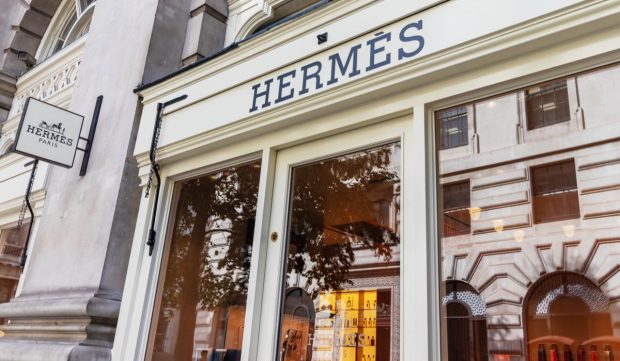Hermès Brings Scarcity Model to the Beauty Industry

Following a 15% increase in beauty and perfume sales last year, luxury fashion house Hermès is expanding its beauty category with all-new products.
The luxury retailer noted that today, its perfume segment only contributes 4% of the total revenue, with leather goods reportedly making up almost half.
The move comes on the heels of robust consumer demand for its products in China during the final quarter of 2022, despite COVID-19 lockdowns and restrictions. The beauty and personal care market in China is also expected to reach a size of $98 billion this year.
“[We] continued to see strong desirability in China,” Hermès Executive Chairman Axel Dumas told Reuters in February. “We saw things going very strongly in China with double-digit growth … including in the fourth quarter.”
The company reported strong sales in China across all product categories during the 2023 Lunar New Year. Meanwhile, globally, the firm reported a rise in total sales by 22.9% year over year to $3.2 billion.
Today, however, revenue in the beauty and personal care market amounts to $571.1 billion and is expected to grow annually by 3.8% until 2027 with 27.5% of total revenue will be generated through online sales.
With that in mind, Hermès is looking to bring its tried and tested business model to the beauty industry.
Instead of making Hermès beauty products accessible to all in an attempt to lure a new type of customer at a different price point, the luxury retailer is looking to do something a bit more consistent with its brand positioning, introducing its scarcity model to the world of beauty.
While the price points are certainly more accessible to consumers, compared to its iconic Hermès Kelly and Birkin bags, which have a resale value anywhere from $9,000 to over $150,000, the brand is looking to keep to what it knows best: exclusivity.
How Hermès Scarcity Model Works for Leather Goods
The way Hermès creates scarcity around its leather goods is by limiting production.
Before being allowed to work on any leather product in the Hermès portfolio, a craftsman must undergo a mandatory two-year training. While this slows down production time, the company believes in maintaining scarcity and exclusivity, which has been their philosophy across six generations of craftsmen. Furthermore, Hermès’ noted that as of Dec. 31, 2021, the company employs 17,595 people, 7,634 of whom are artisans, with its production being carried out in France across 52 sites.
When it comes to its customers, those looking to purchase a Birkin bag, or any bag that is considered a quota bag, must place an order and wait to be offered a bag since Hermès leverages a queue system, which has led to a surplus demand spilling over into other Hermès “consolation” products such as wallets and belts.
Hermès also does not follow the strategy of launching region-specific collections or product offers and consistently emphasizes its independence in terms of its shareholding structure and family ownership. This approach allows the company to maintain the majority of its production within France and execute its long-term vision.
Lastly, Hermès products are never discounted.
Hermès Will Bring Its Leather Goods Model to Beauty
Hermès originally entered the makeup market in spring 2020 with a collection of lipsticks named Rouge, followed by blush and nail enamel in 2022. In the same year, it launched a complexion balm called Plein Air. Gregoris Pyrpylis, the brand’s creative director of beauty, told the Financial Times that the company’s beauty philosophy is simple and aims to offer only the essential components, rather than a broad range.
Hermès plans to release new eye makeup products, such as mascara, eye shadow and liner, in late 2023. The distribution will be strictly controlled and limited to its own omnichannel and select retailers like Harrods and Selfridges, aligning with the brand’s sales strategy for its Birkins and high-end accessories.
Hermès noted that Dumas has been extremely deliberate in gradually introducing new products, while also implementing eco-friendly practices like eliminating plastic from its packaging and collaborating with primarily French and Italian manufacturers.
Scarcity x Makeup = A Living Example
While it can be argued that Hermès is the epitome of the perfect scarcity model, streetwear brand Supreme has also created an entire culture and following around the same business model. In 2020, the streetwear giant teamed up with makeup artist Pat McGrath to create a single red lipstick. The product originally retailed for $38 but can now be found on websites like Farfetch for $130.
Hermès Beauty Today
Today, Hermès beauty products can be purchased online directly from the company website as well as in-store at Hermès and participating retailers which include Neiman Marcus and Saks Fifth Avenue.
Unlike many of its most sought-after bags, its face products like its iridescent mineral powder and rouge lipstick are readily available to be purchased, and products tend to range anywhere from $45 to $650.
But will the Hermès beauty product assortment have the same hype as its coveted Birkin or Kelly bag? Only time and Hermès admirers will tell.
For all PYMNTS retail coverage, subscribe to the daily Retail Newsletter.

